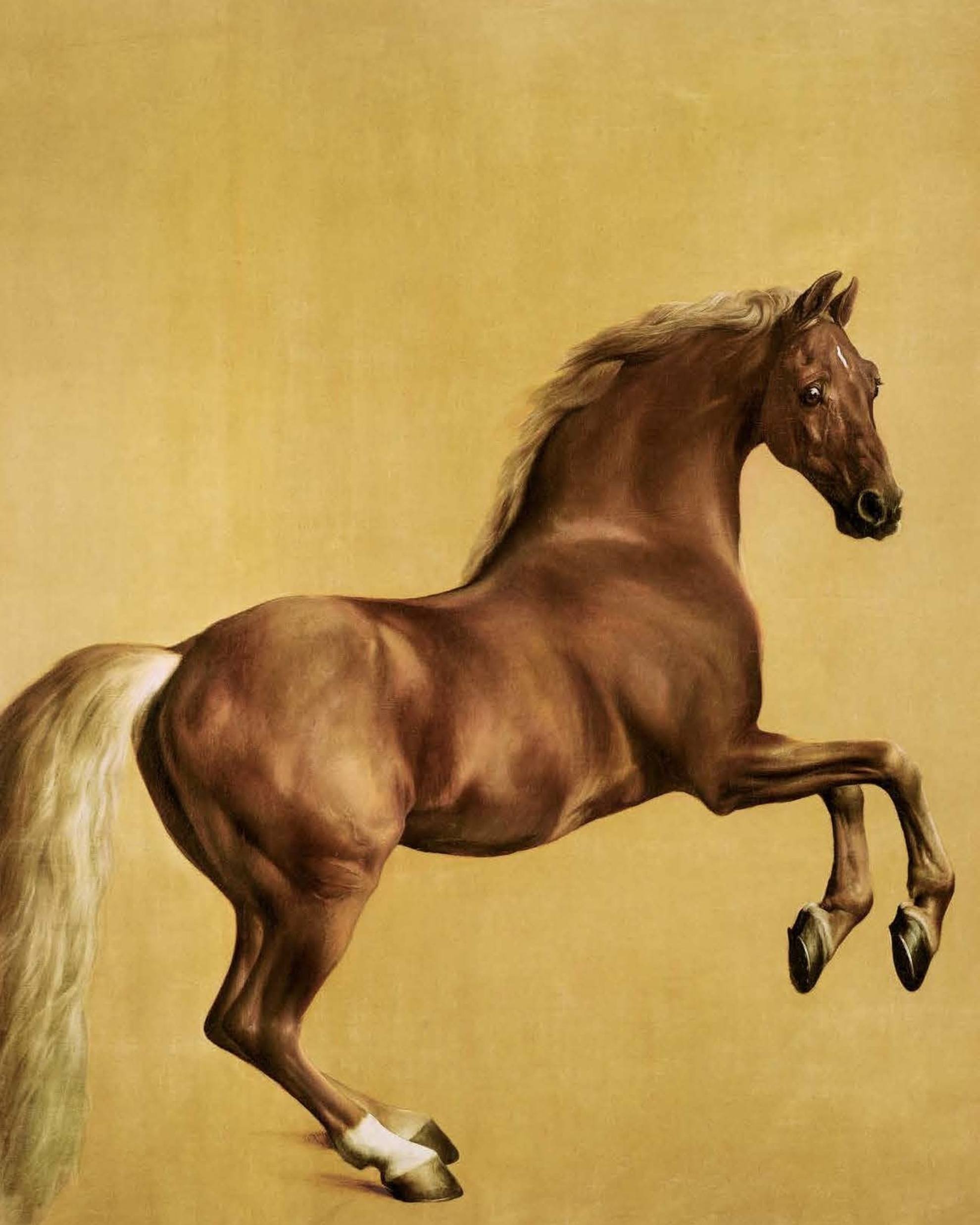
Portrait of a Racehorse
GEORGE STUBBS, EQUINE LIMNER
Andrew Graham-DixonAt the age of ninety-six, shortly before her death, Queen Elizabeth II mounted her Fell pony Emma for a last ride. Throughout her lifetime, the queen’s love for horses proved the persistence of the ancient bond between Angles, Saxons, and Odd-Toed Ungulates. She was the perfect monarch for a country that, in the eighteenth century, gave the world both the Jockey Club and one of the greatest horse portraitists of all time: George Stubbs. Enamored of the beautiful, noble, prancing equine form, Stubbs rarely painted steeds subjugated by their riders, favoring purebreds without a horseman – occasionally rearing majestically, but as often as not standing pensive and even perplexed. Stubbs’ heraldic motto might well have been Equus gratia equi, “a horse for its own sake,” not a plaything of humans. He was a great and complex artist who worked in what has been considered a lesser genre. He ended his career as a painter and student of animals by working on an unfinished textbook on the comparative anatomy of human beings, tigers, and chickens.






